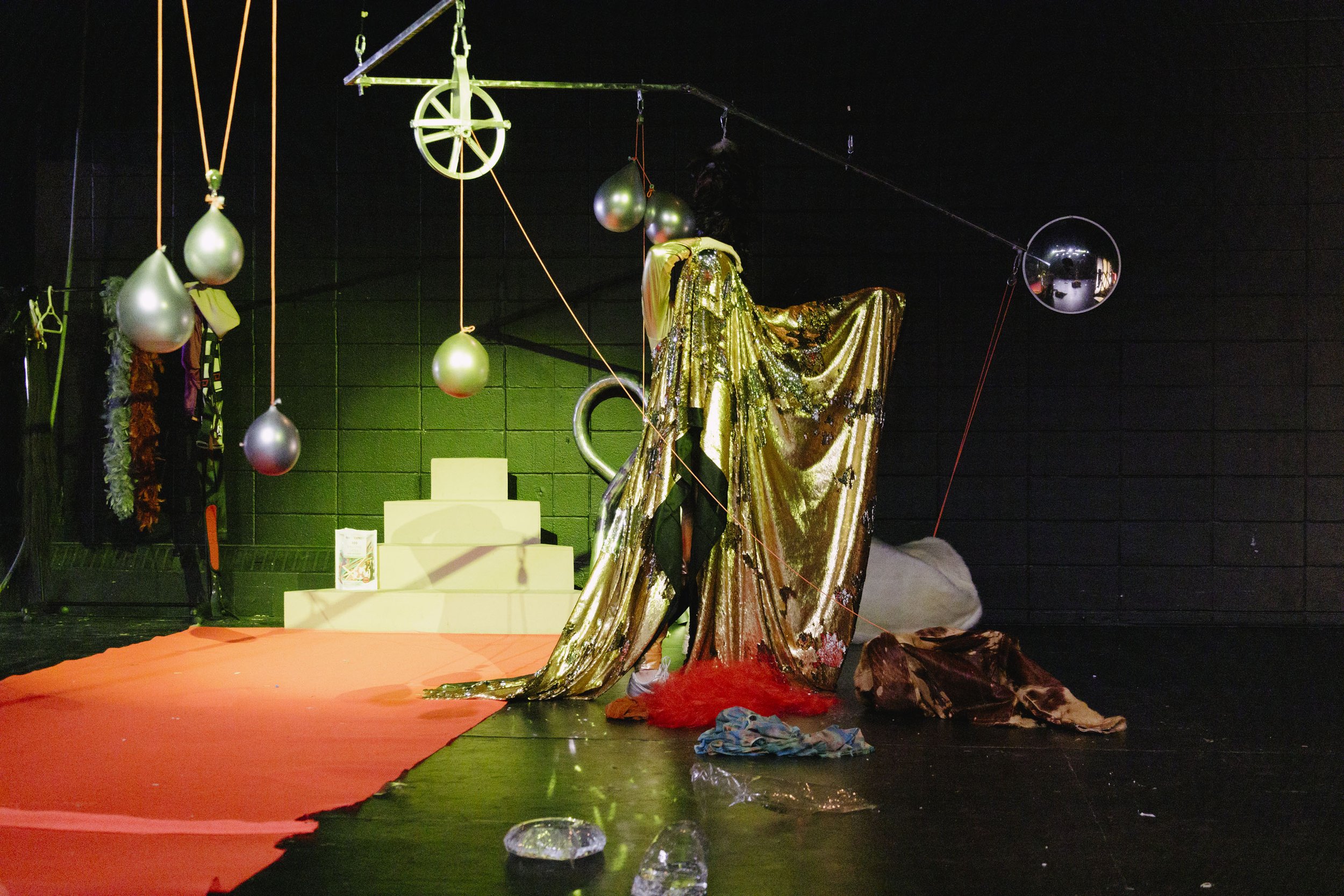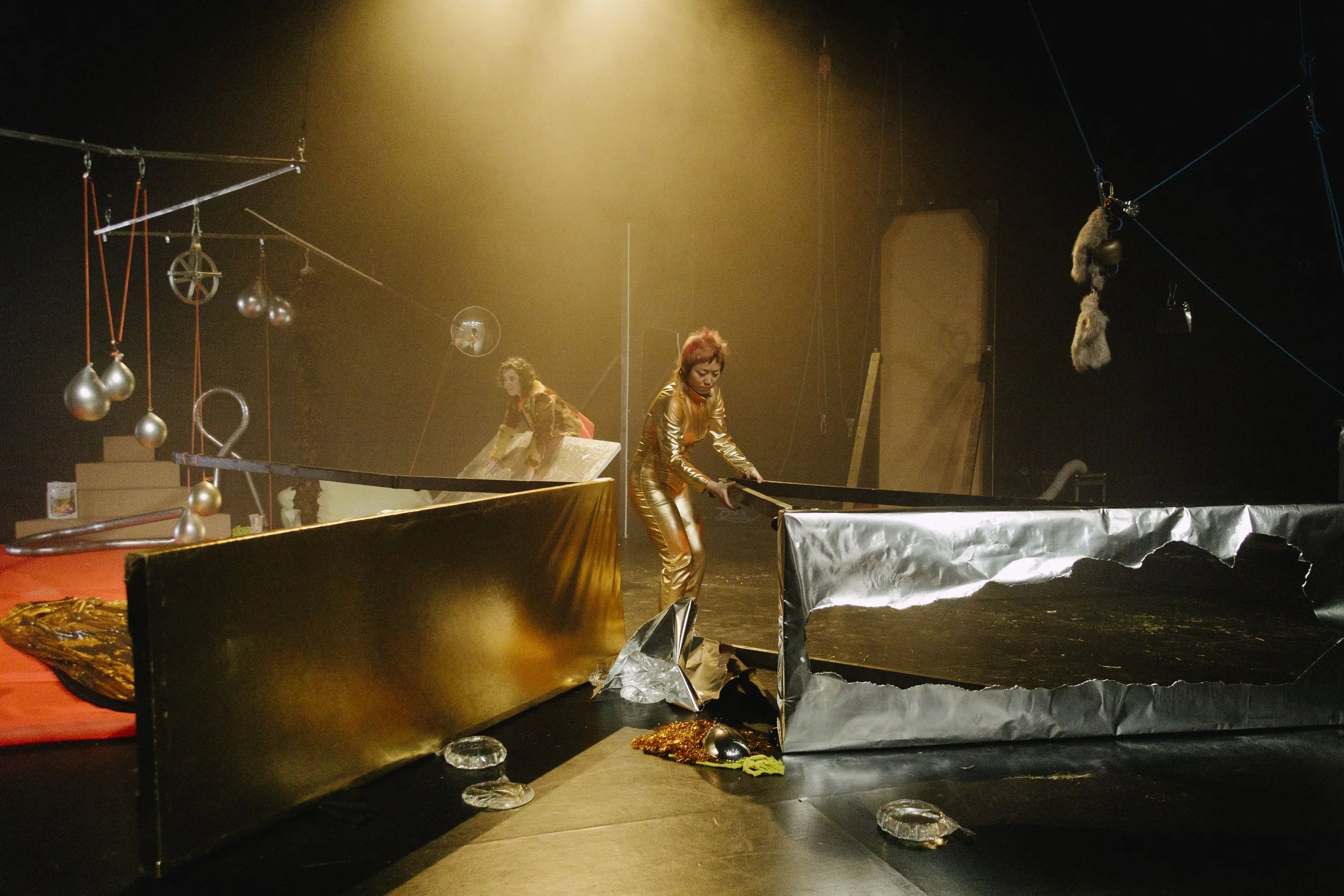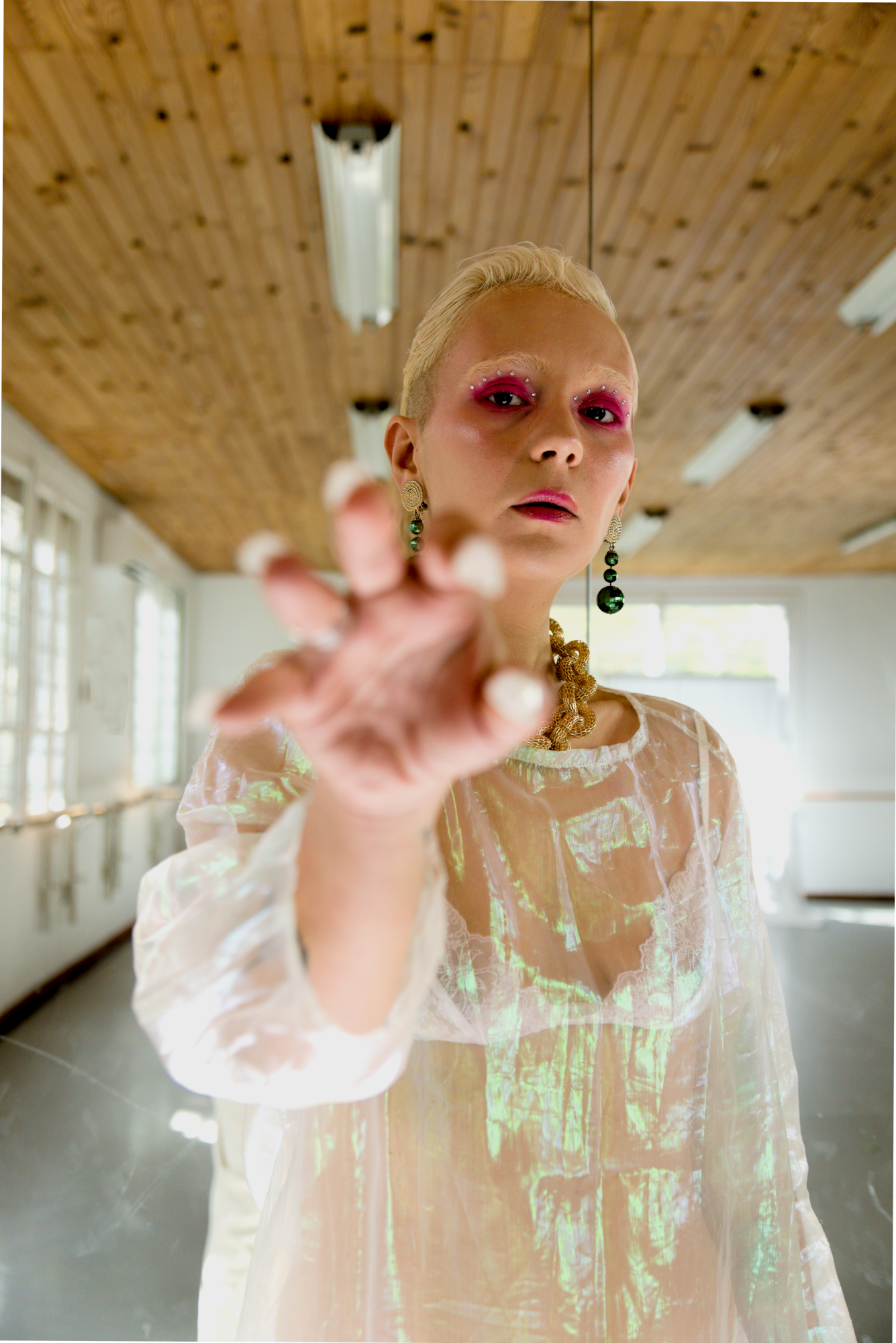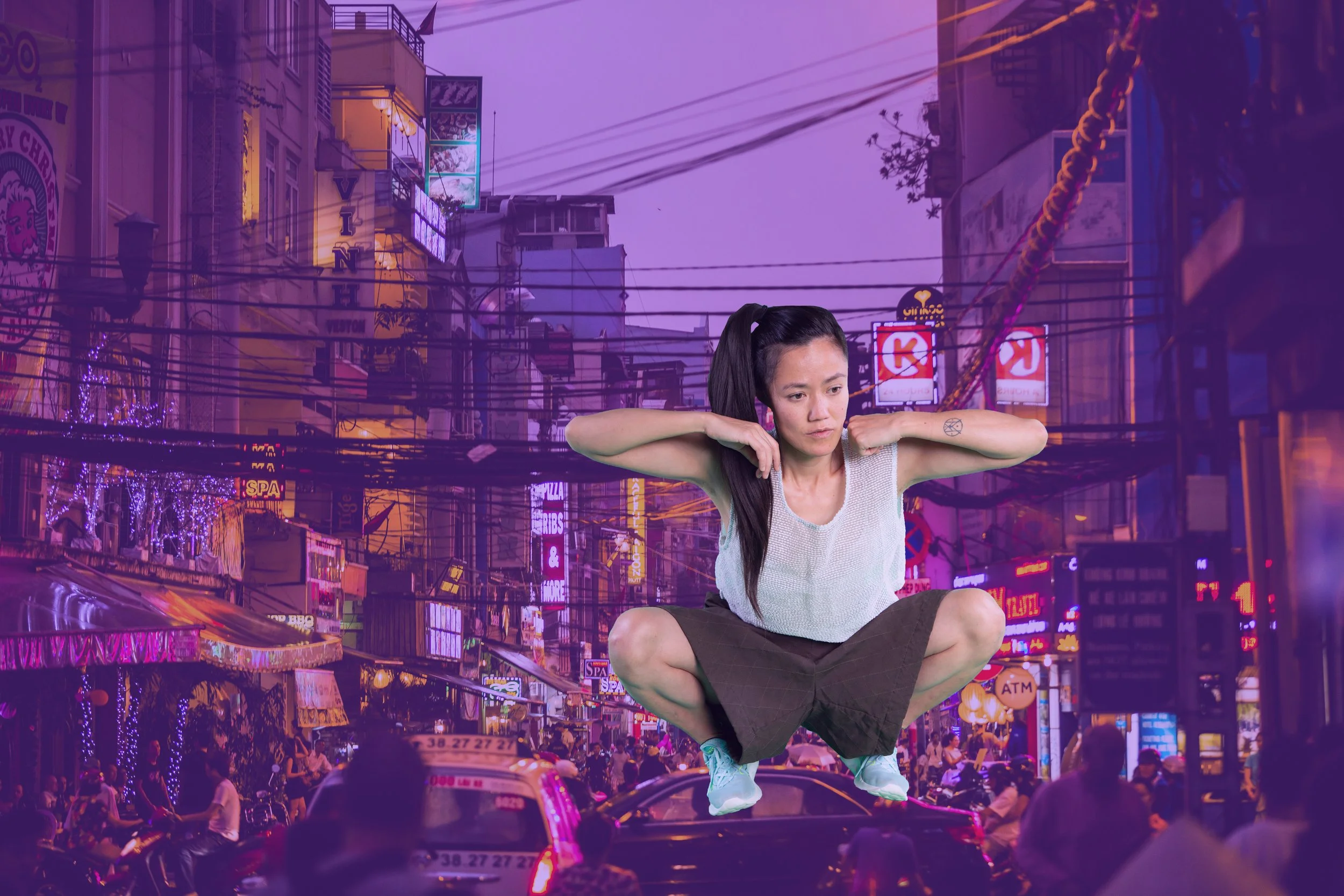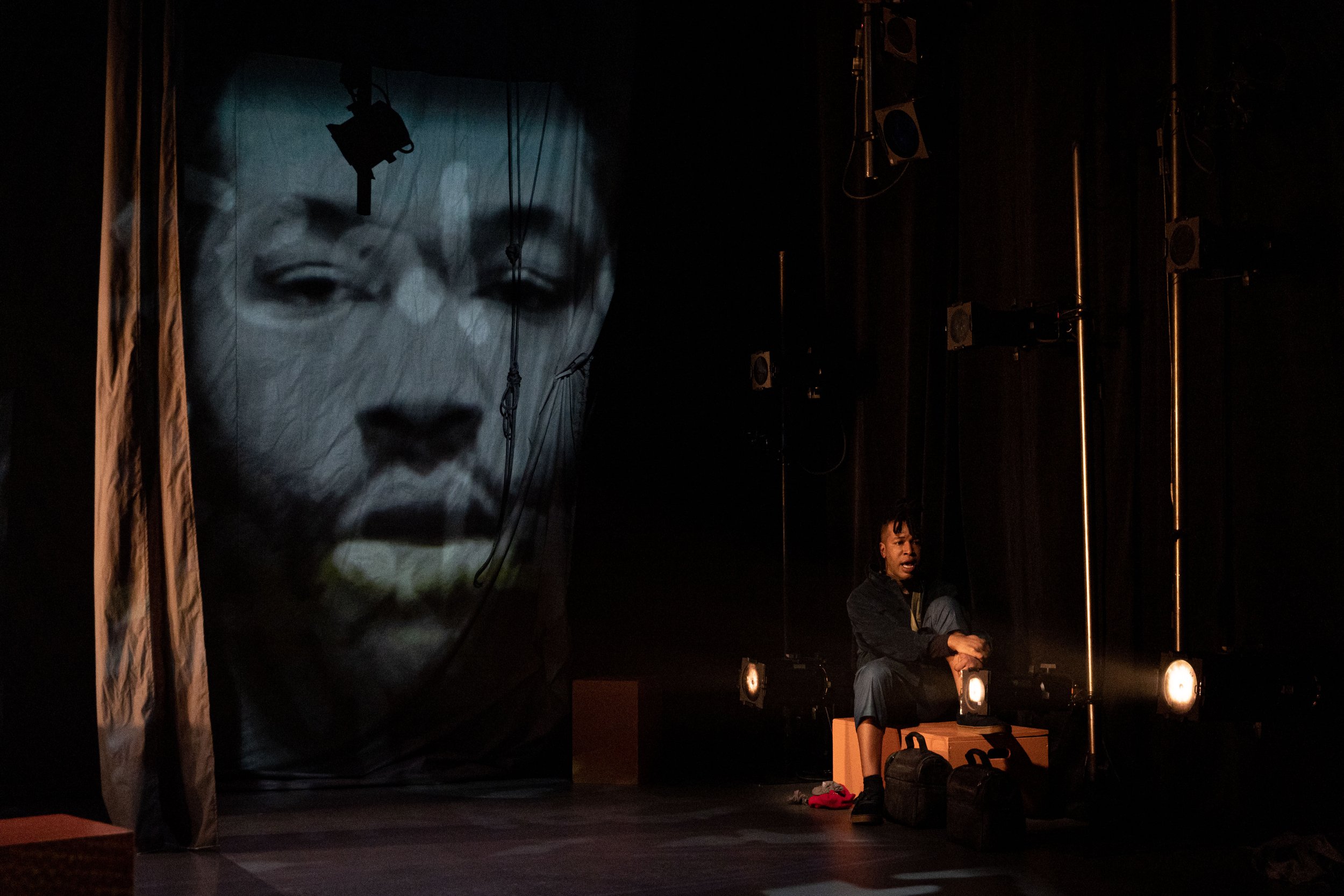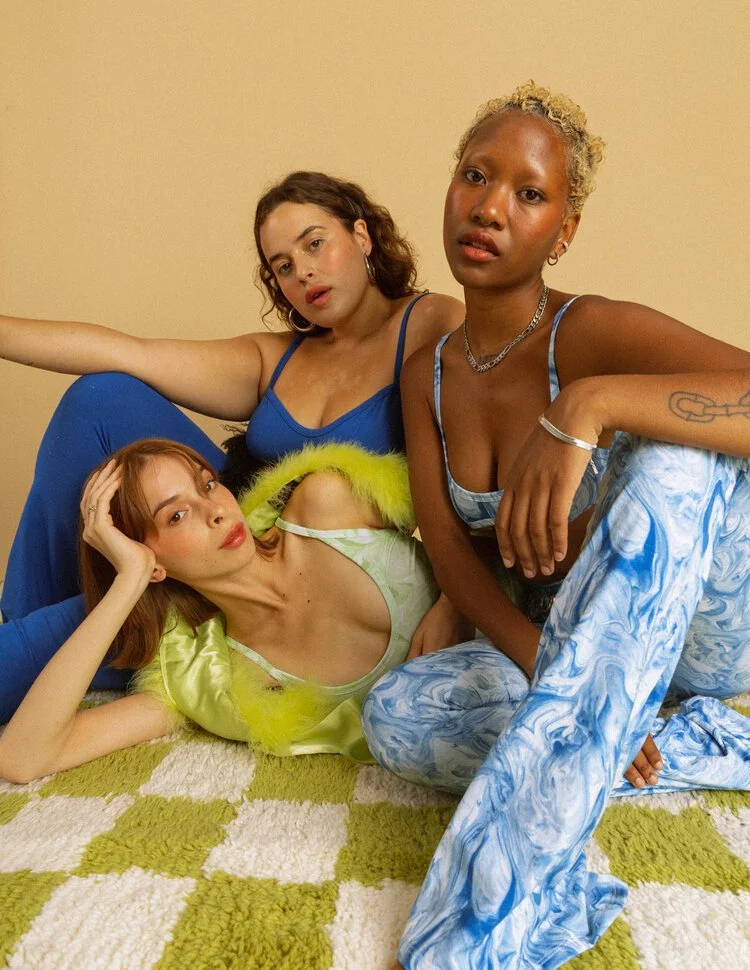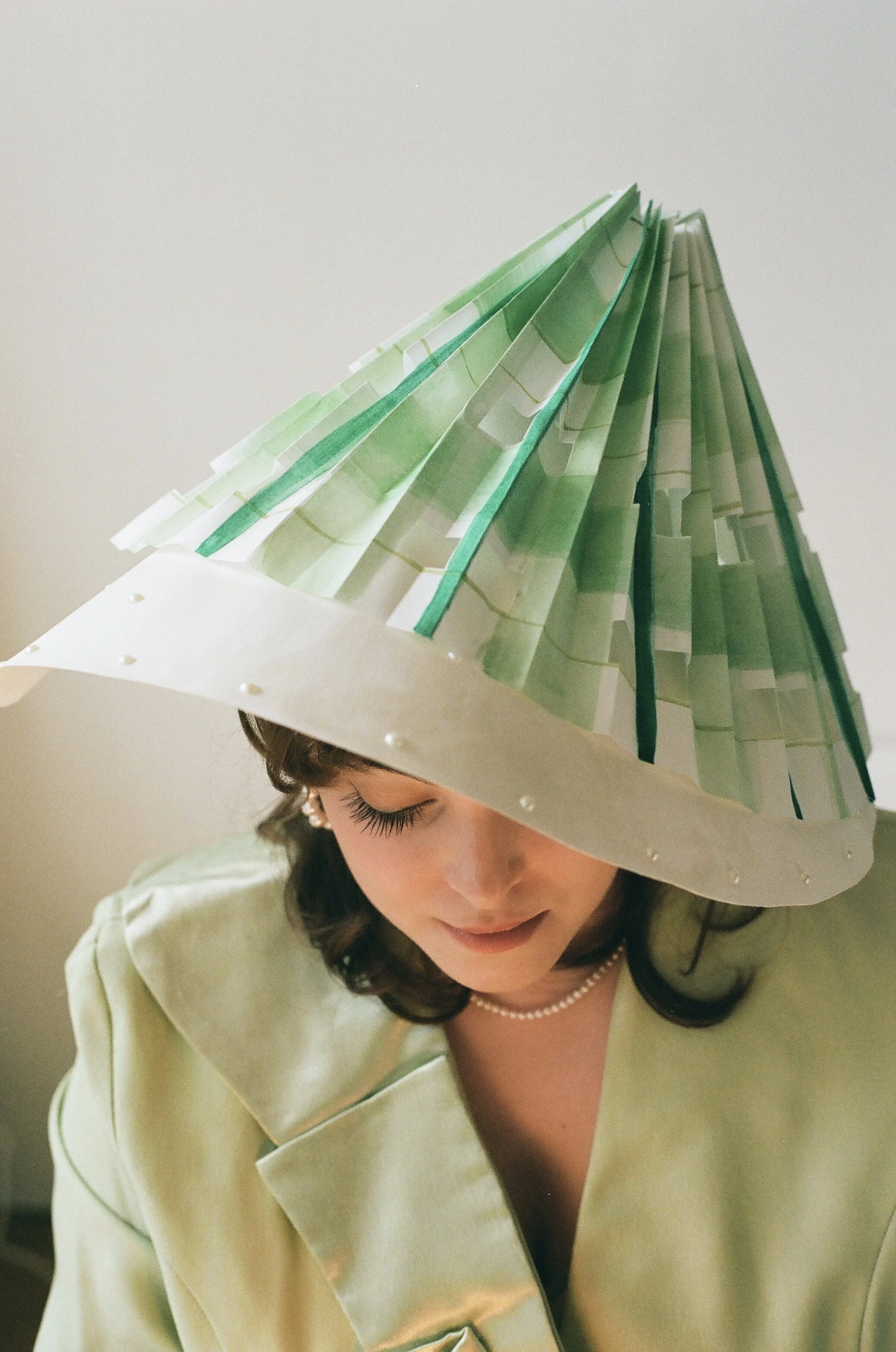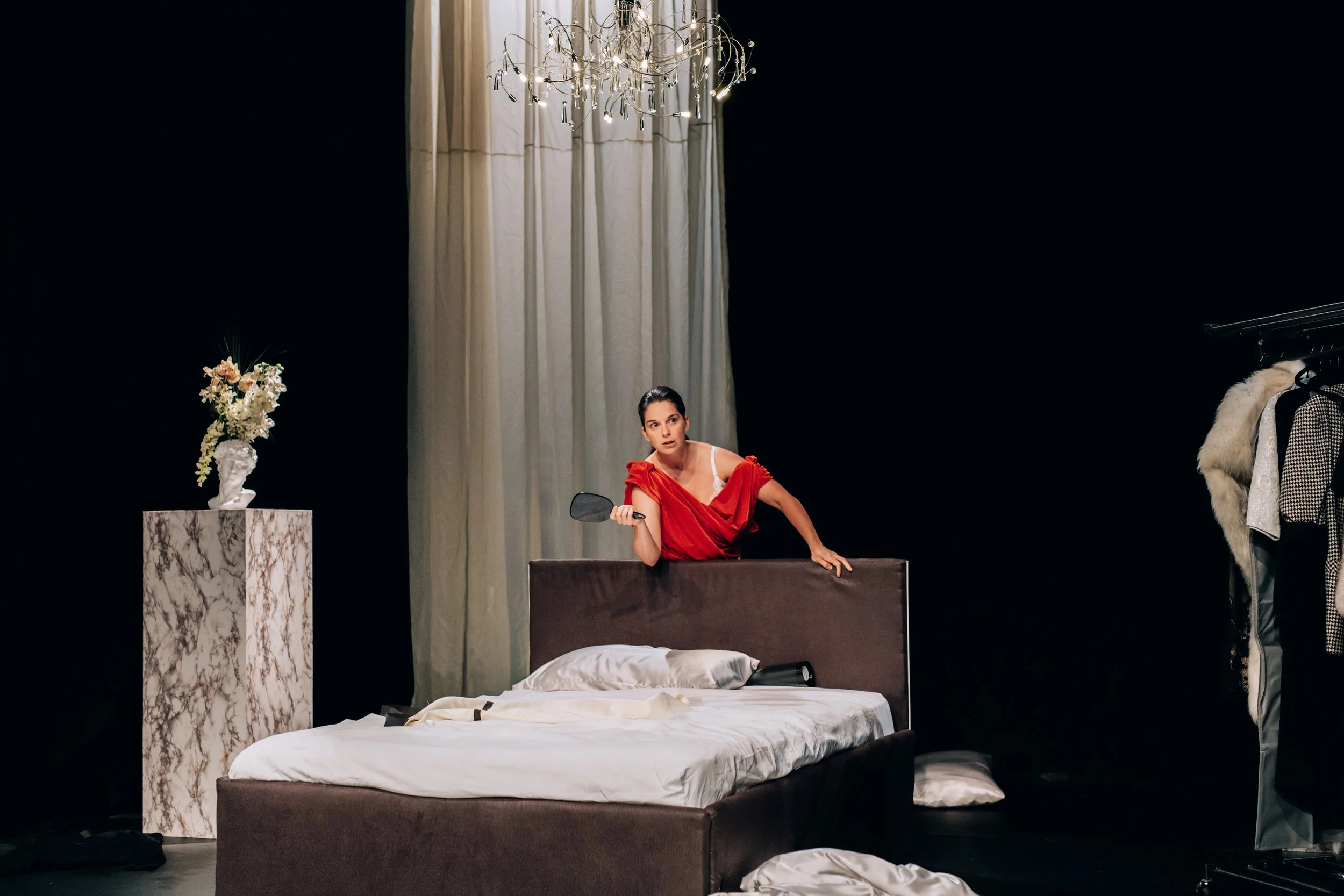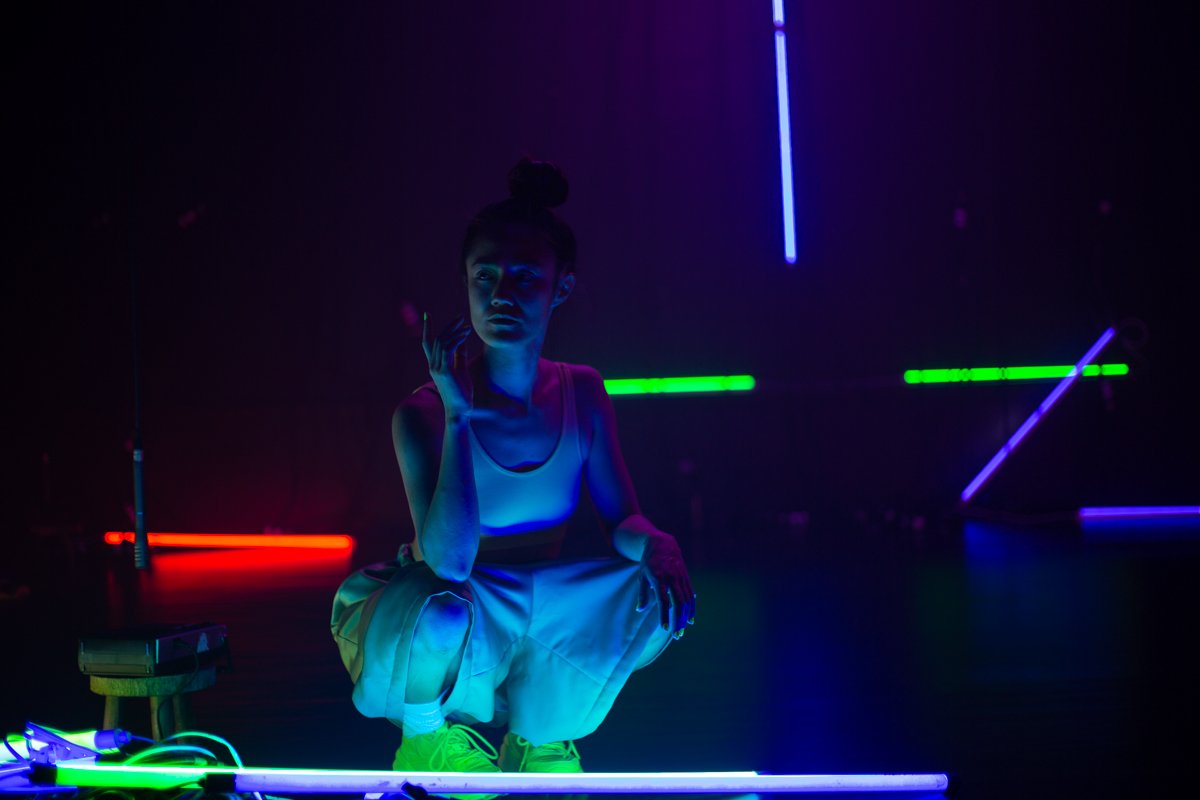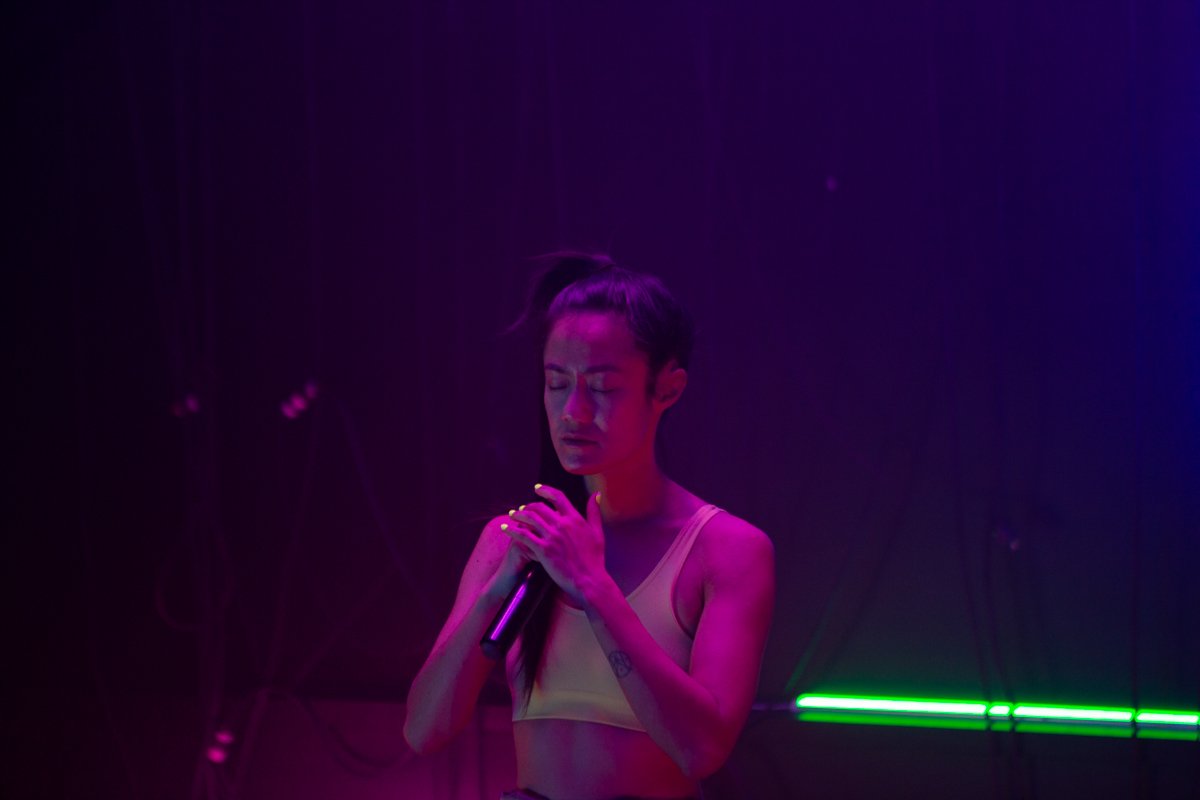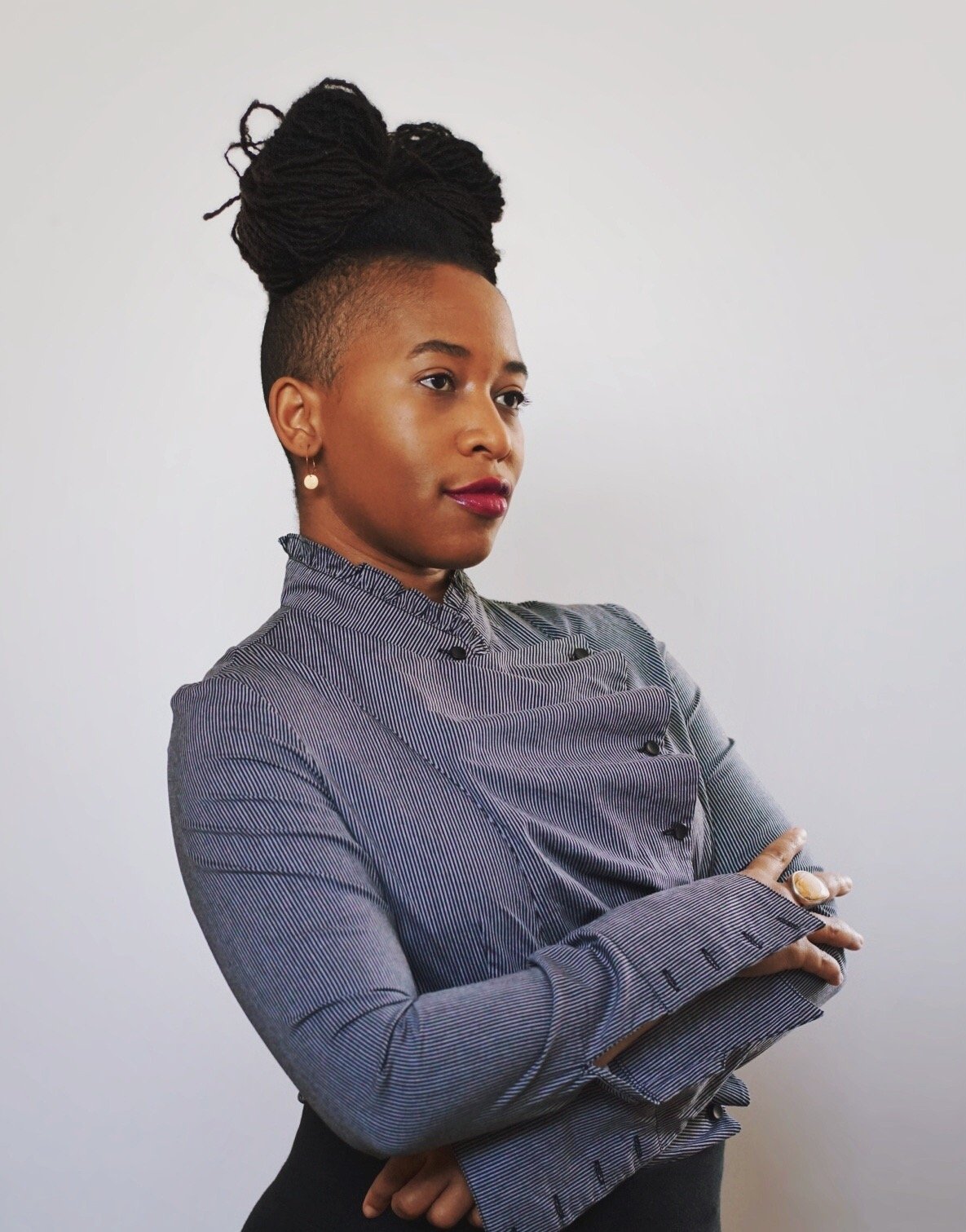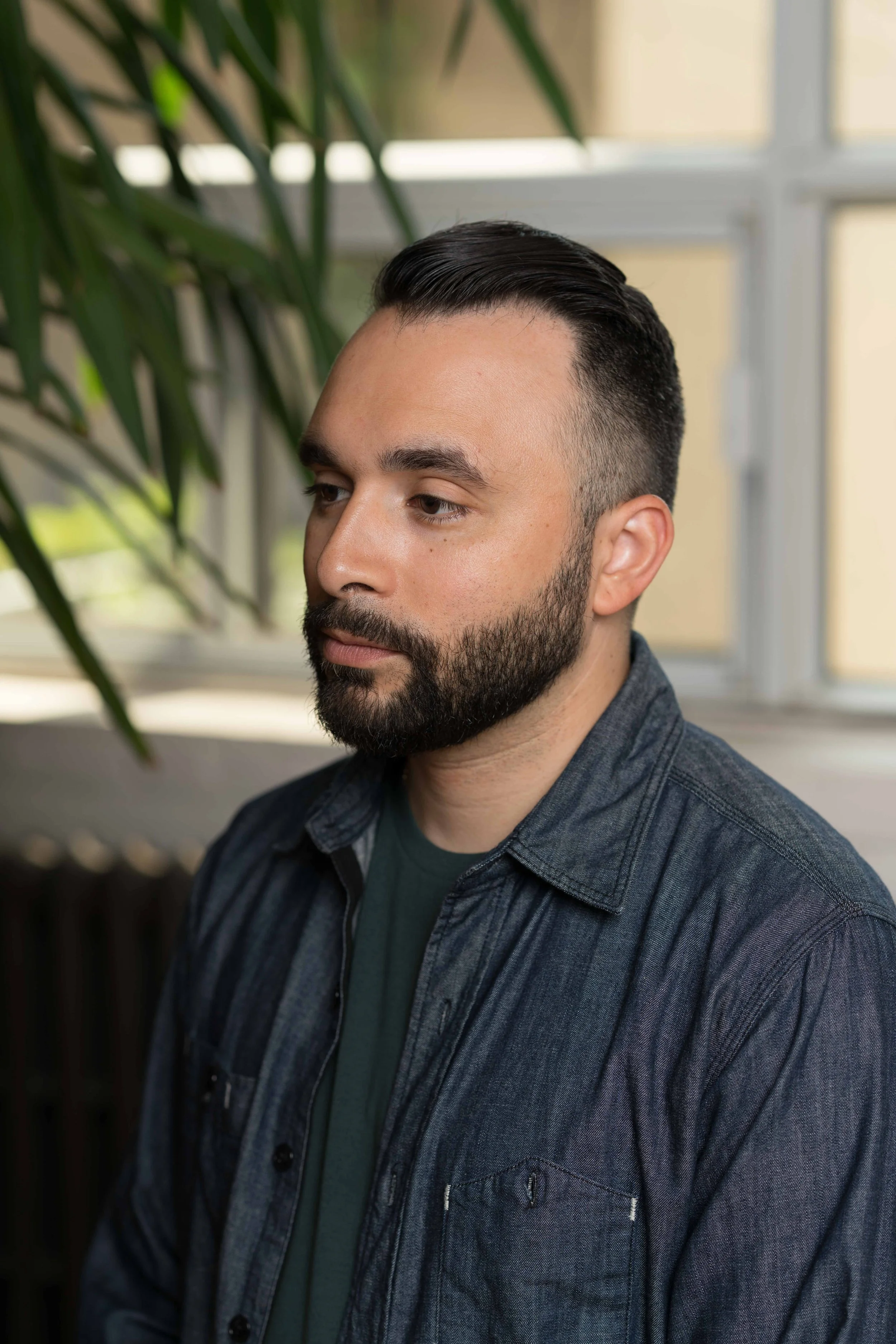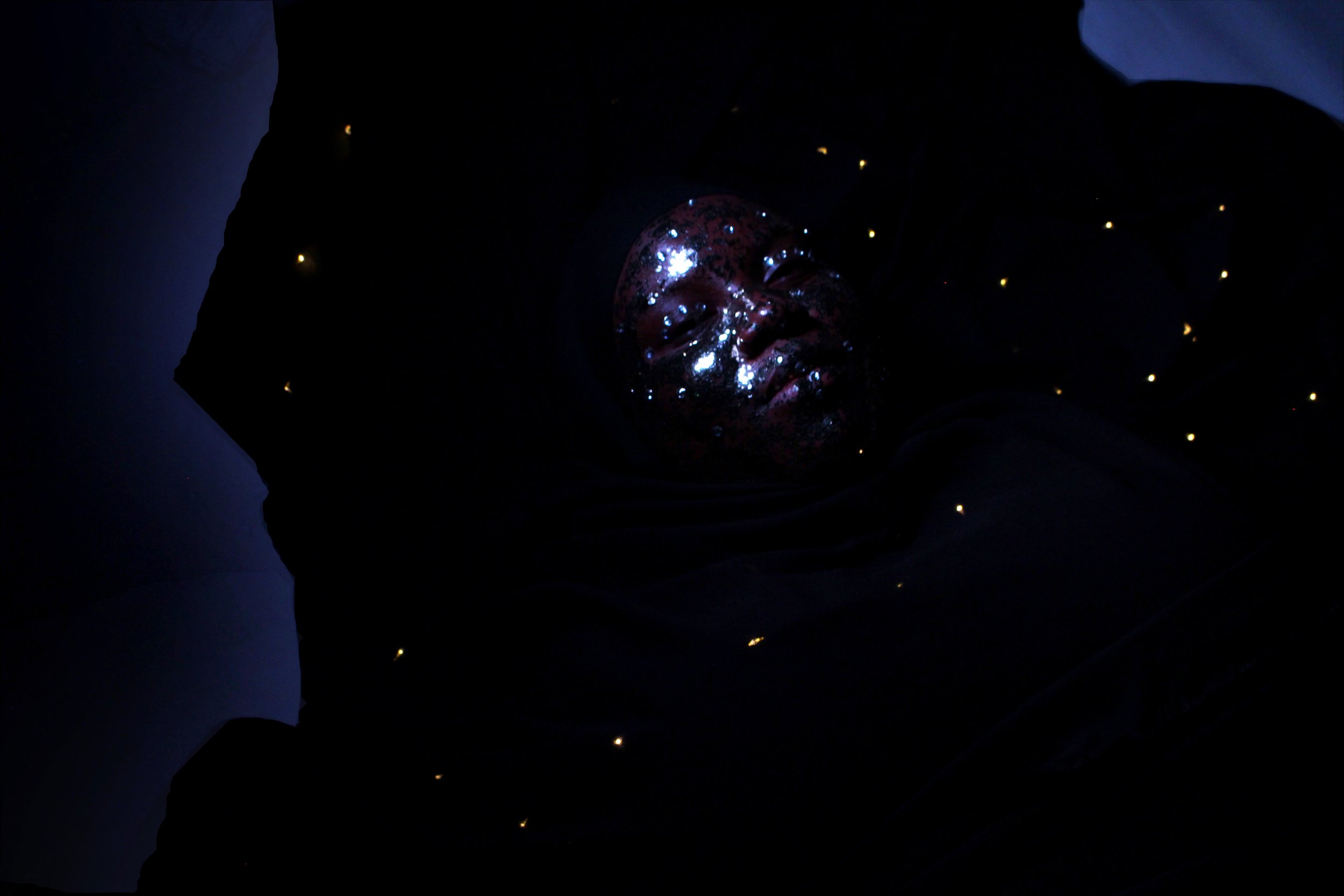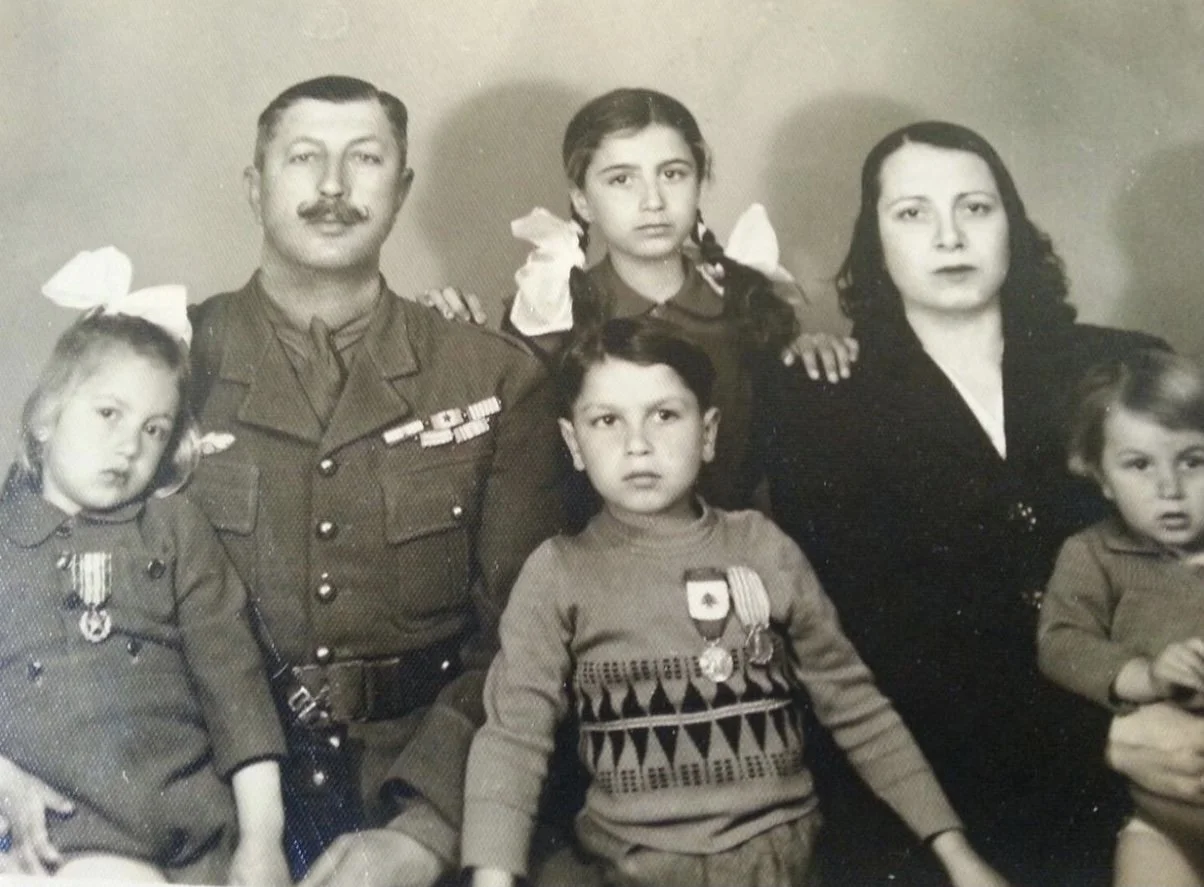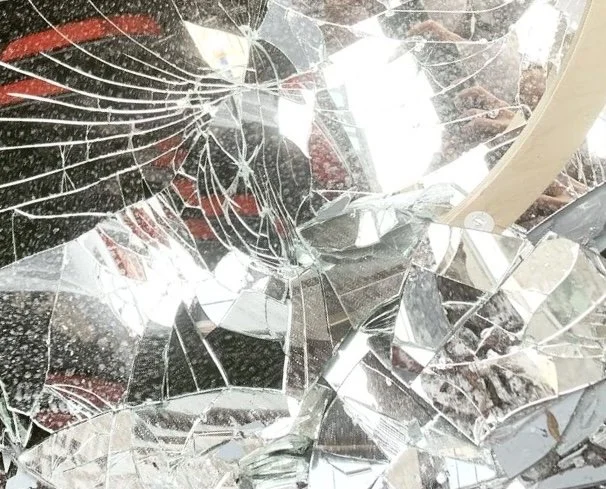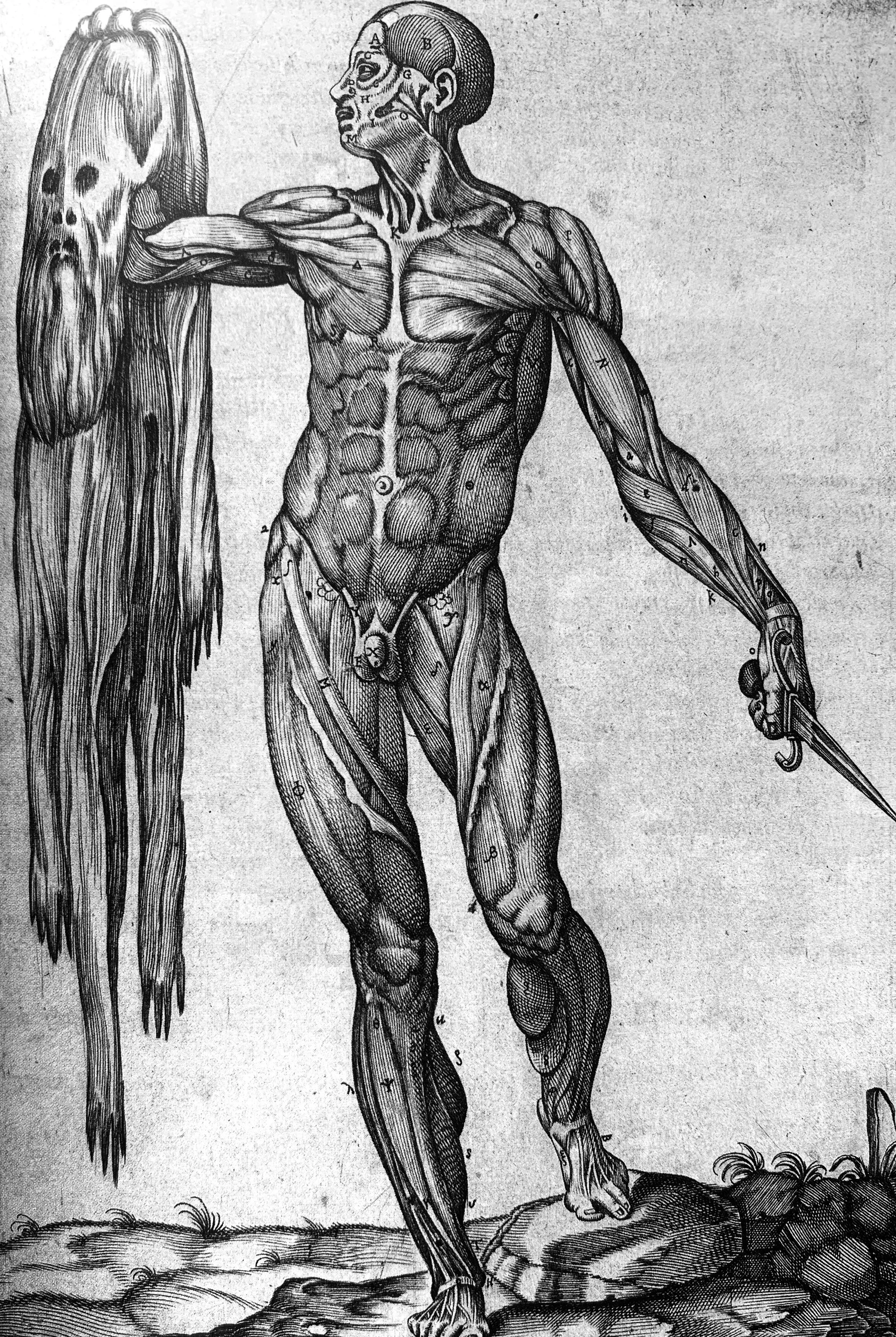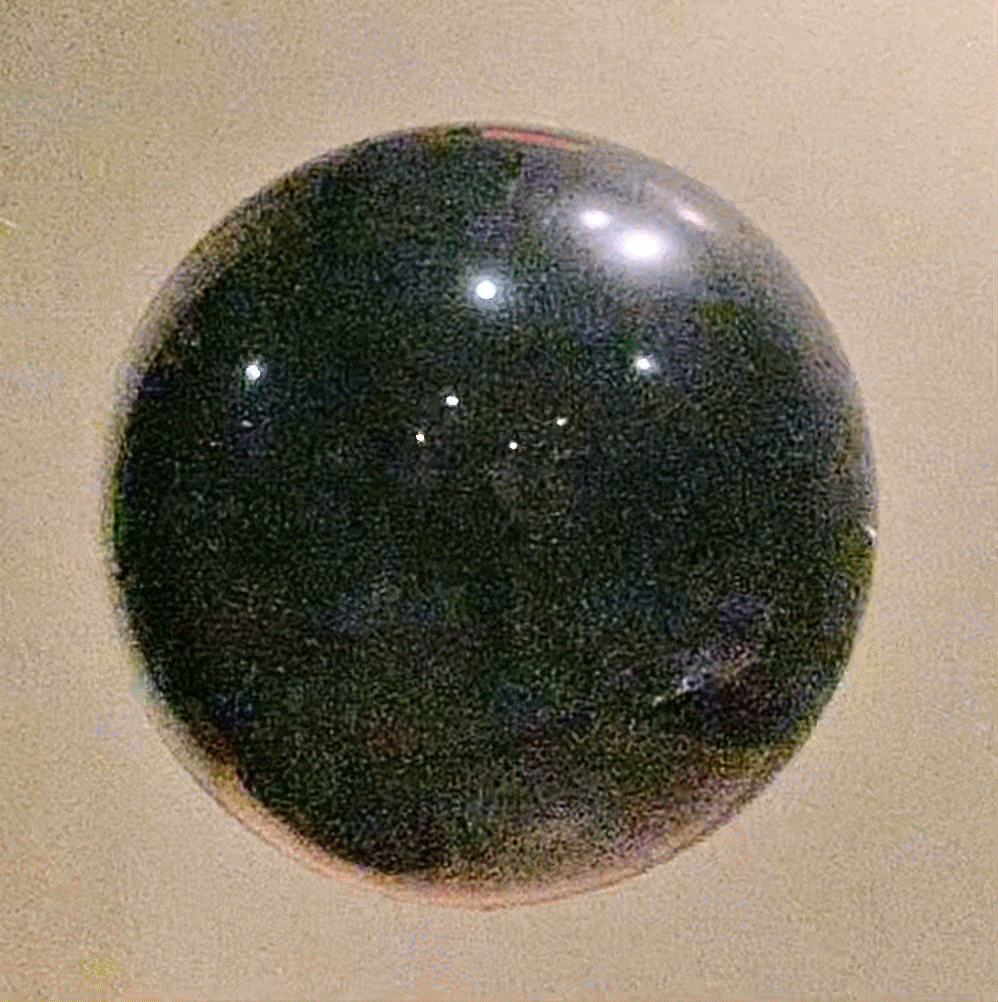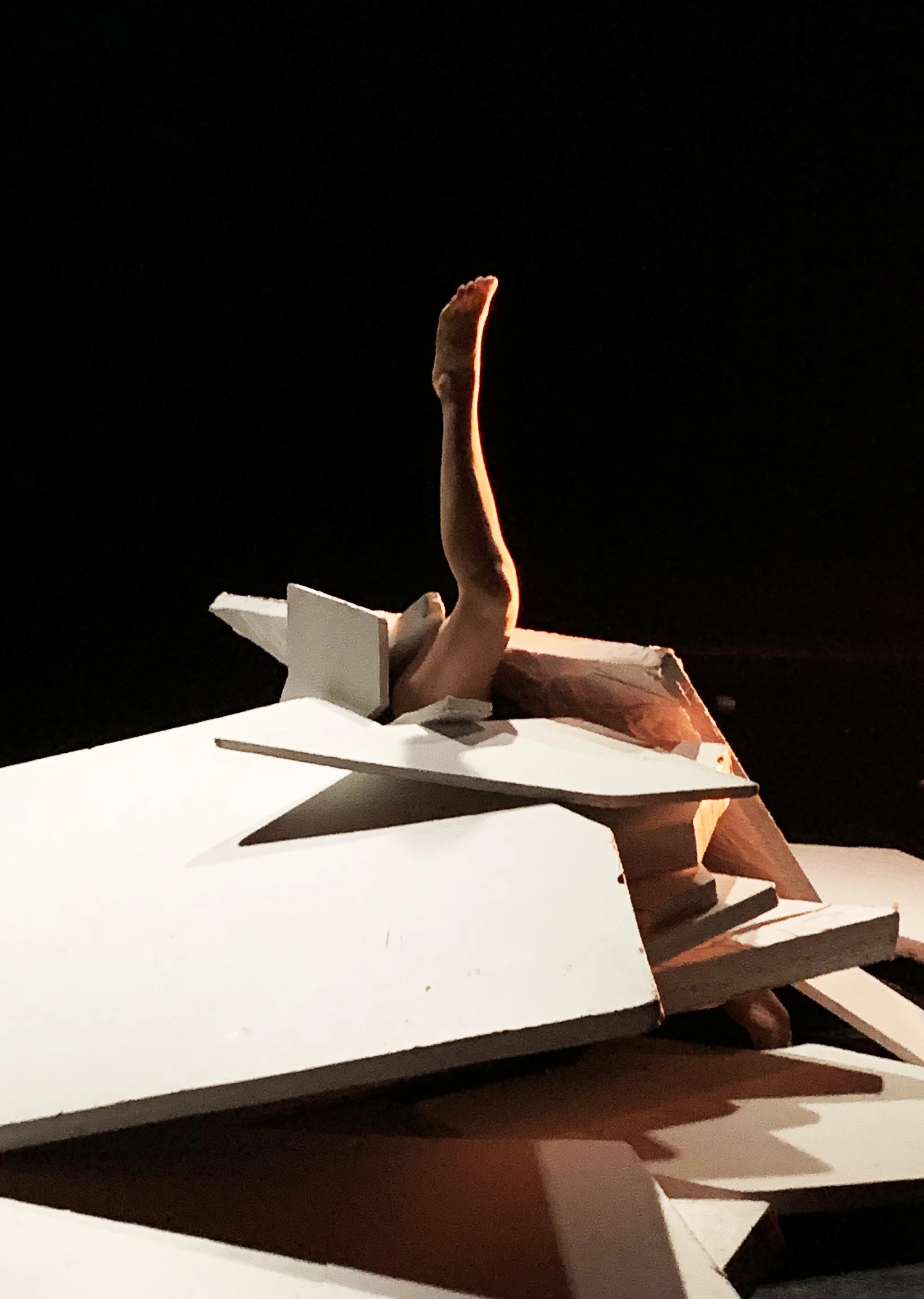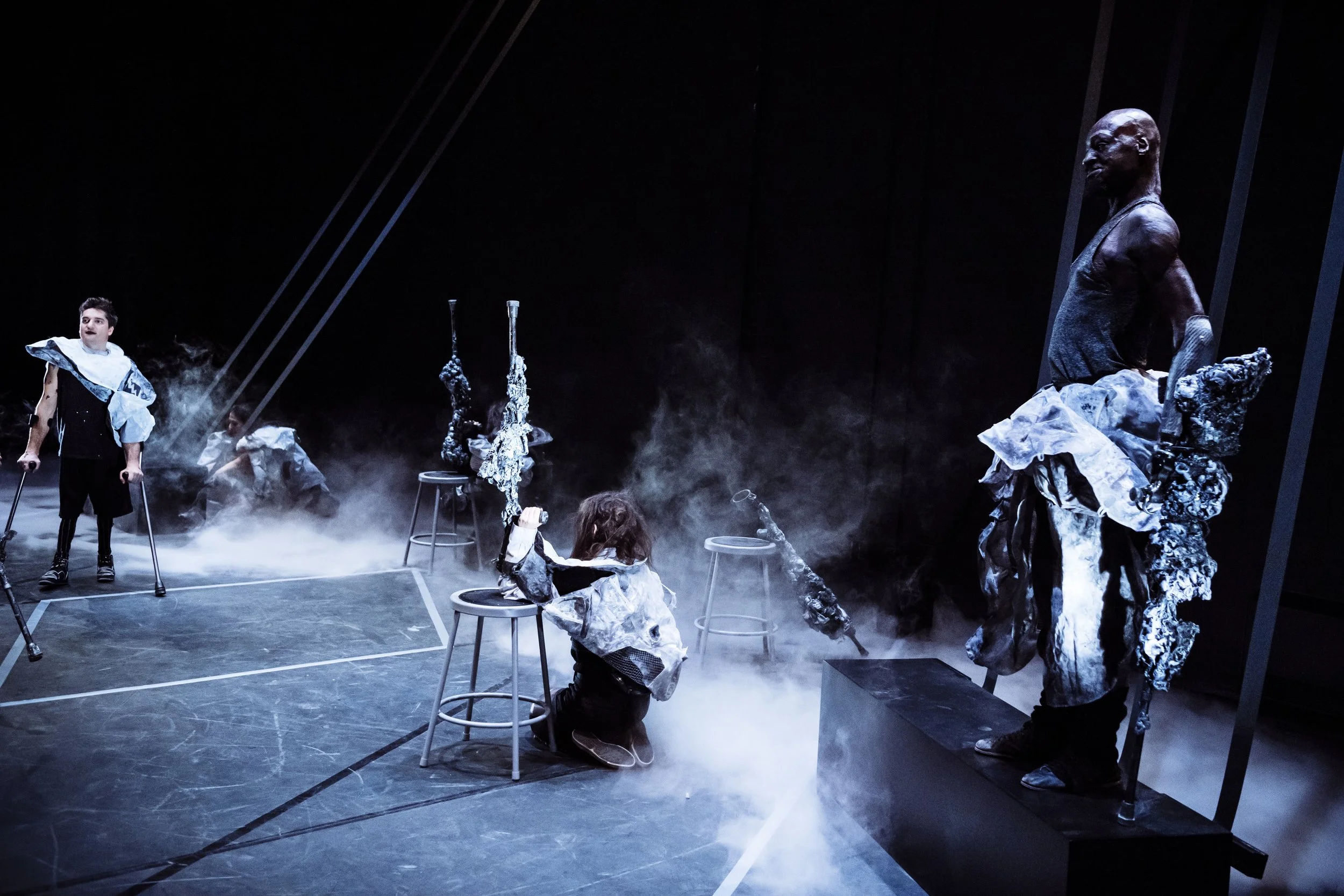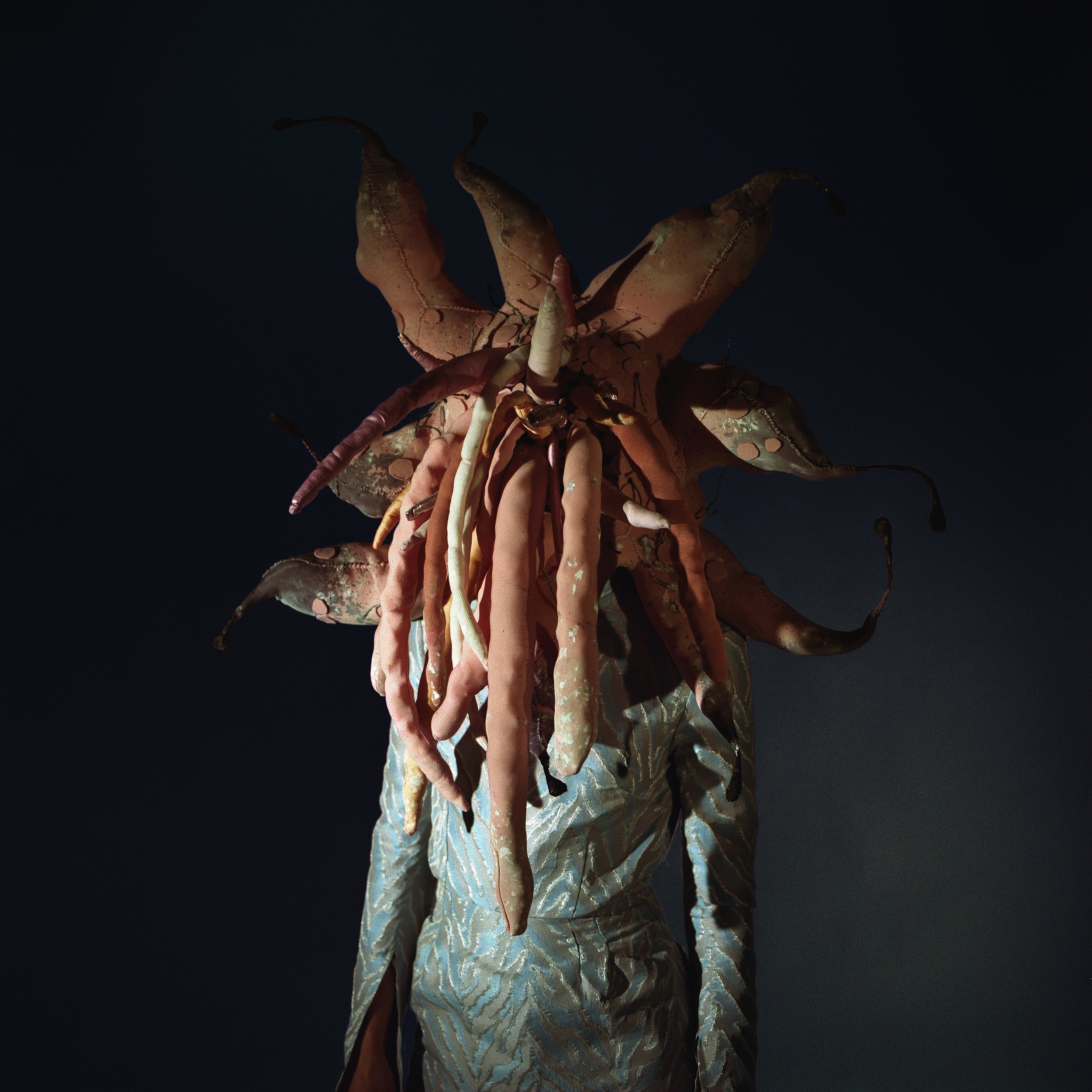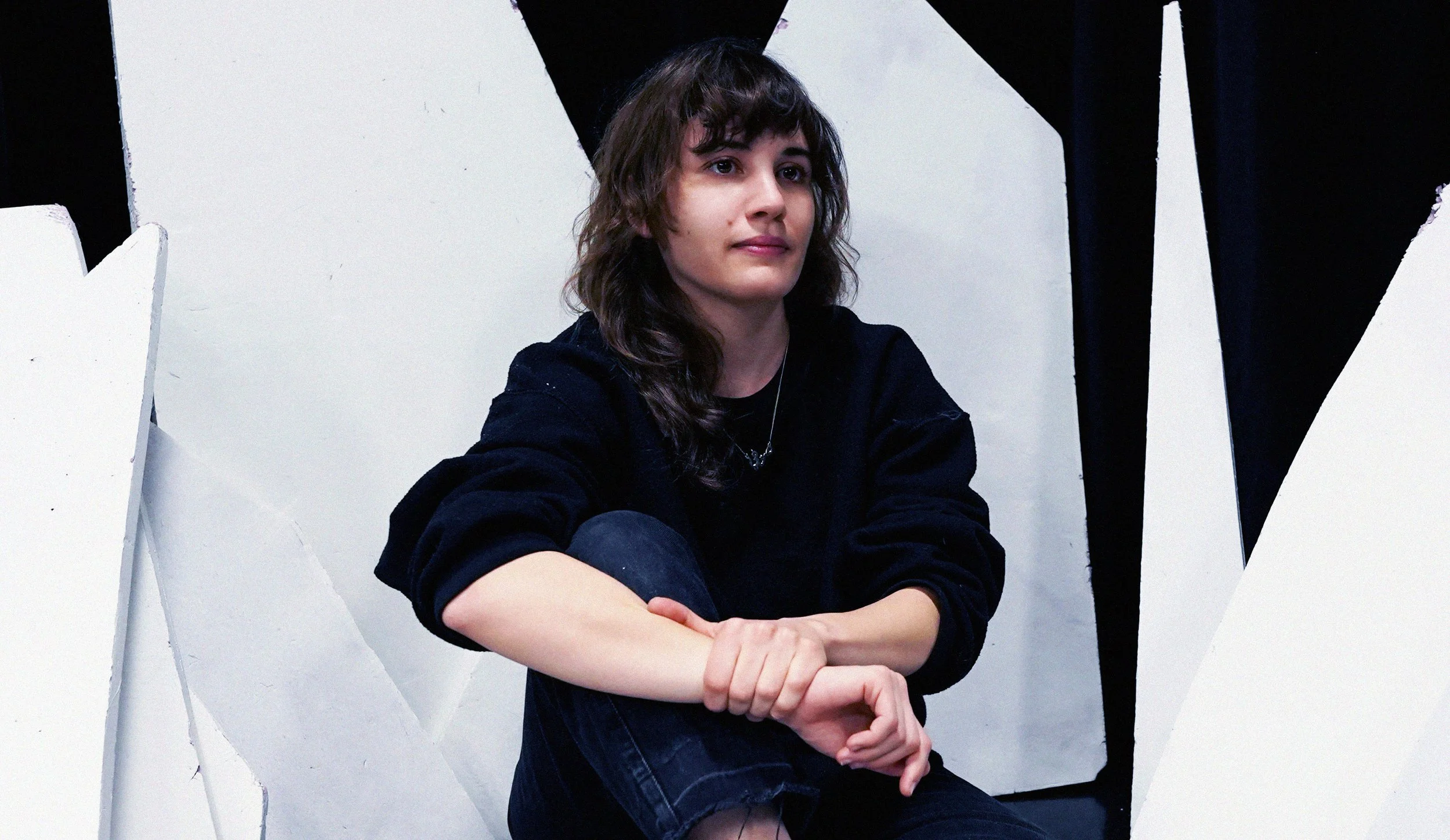She's Late // A Circus Show - Witnessing the World of Double Fantasy
Image by Document original
She's Late // A Circus Show by Double Fantasy is an experimental circus performance that blends dance and performance art to create a surreal and immersive experience. The show comprises two acts: an improvisation portion and the main dance performance.
During the improvisation portion, the performers explore different characters, outfits, and scenic devices while manipulating objects and exploring the theme of gravity. One character emerges from a giant, fuzzy egg shape with water sacks, while another plays with a hanging contraption of balloons. The performers manipulate different pieces around the stage, even sawing some of them open. The lighting and stage setting are equally impressive, with bold choices of color and a sense of randomness that added to the surreal atmosphere. The audience is treated to a unique experience of absurdity and visual spectacle, culminating in a captivating dance performance in the second act.
The stage setting and colors of the performance also caught my attention. The use of bold colors and random objects, such as the giant balloons and water sacks, added to the overall surreal and dreamlike atmosphere. The lighting was set beautifully, with different colors and intensities used to complement each scene. The combination of the stage design and lighting created a visually stunning experience that enhanced the overall impact of the performance.
Image by Document original
The main performance is a mesmerizing dance piece that sees the performers balance giant balloons over a fan, bounce water balloons up and down on a pulley, and use harnesses to move across the stage. The water balloon scene is particularly awe-inspiring, as the performers bounce the balloons up and down in a perfectly synchronized manner. The performers show incredible physical strength and coordination, seamlessly combining dance and circus performance. One performer even rises up on a harness upstage while another is naked on top of giant balloons.
She's Late // A Circus Show is a unique and thought-provoking performance that explores themes of impossibility, surprise, and tension. The performers share a complicity with the place, the objects, the scenography, and the public, creating a shared experience that blurs the boundaries between performance and reality. Nien Tzu Weng and Camille Lacelle-Wilsey are "soft clowns" who use their illogical gestures and misunderstandings to create an amusing and welcoming atmosphere, despite the surreal and absurd actions taking place on stage.
The artists’ unique perspectives and styles left a lasting impression on me, and I can't wait to see what they create next. For anyone who missed this show, I highly recommend following these artists to keep up with their future endeavors. It's clear that they have a lot to offer, and I'm excited to see where they go from here.
Image by Document original
Double Fantasy is comprised of two artists, Nien Tzu Weng & Camille Lacelle-Wilsey:
Nien Tzu Weng is a Taiwanese-Canadian interdisciplinary dance artist and lighting designer based in Tio'tia:ke-Montreal. She aims to build bridges between disciplines, pursuing an experimental approach to contemporary performance, and a laboratory based approach to lighting design. As both choreographer and lighting designer, Weng is curious about the relationship between movement and new media practices, and plays with the balance between reality and fantasy. She uses light and multimedia in order to play with perspective, perceiving performance as a process of transmitting dialogues between inner and outer space, where presence and image builds multiple, overlapping conceptions of time. Her projects have been shared in Node Digital Festival (Frankfurt, DE), Biennale Némo (Paris, FR), Ars Electronica (Linz, AUT), Les Percéides (Percé, QC), SummerWorks (Toronto, ON), 1-act SHIFT Theatre (Vancouver, BC) as well as OFFTA Festival, Elektra, Akousma, Tangente Danse, La Chapelle, and MAI Theatre in Montreal. She co-created the collective: Double Fantasy and is currently a member of LePARC (Milieux), one of the supported emerging artists with CCOV, as well as a resident artist at Topological Media Lab, where she develops her research on presence and interactivity.
Camille Lacelle-Wilsey is a contemporary dance artist originally from Tiohtià:ke/Montreal and newly based in the Eastern Townships. After graduating from Concordia University with a BFA in contemporary dance, she continued her choreographic research, focusing on interference, transformation and sudden change of state. Since 2015, she has presented her creations Come a Bit Closer, Ghostbox, Dispositif and D'amour ils se gaveront, de haine ils déborderont at Tangente. She is currently in creation for the She's late - A Circus Show with her sidekick Nien Tzu Weng with whom she created the Double Fantasy collective. She has just presented a solo performance exhibition entitled Radiant Investigation combining photography and dance at the VAV Gallery. In parallel to creation, she is interested in the creative process as a videographer, rehearsal director, member of a selection jury, movement consultant and performer-researcher. She has worked with artists such as Sara Hanley, Louis Clément Da Costa, Émile Pineault, Erin Hill, Nien Tzu Weng, Eryn Tempest and Catherine Lavoie-Marcus.
She’s Late // A Circus Show ran March 15, 17 & 18 at La Chapelle Theatre.
Performers + Creators Collectif Double Fantasy
Special guests Lael Stellick + Erin Hill
Costum Designer Marie-Audrey Jacques
Sound Designer Dae Courtney
Light Designer Jon Cleveland
Set Design Étienne Plante
Technical Director Darah Miah
Production Support François Bouvier Michael Martini
Artistic Coach Sylvie Tourangeau
Supported by Danse-Cité + Conseil des Arts du Canada + Conseil des Arts de Montréal + RURART - art contemporain en milieu rural + CASJB - Centre des arts de la scène Jean-Besré + LA SERRE - arts vivants + Ranch Cheval de Soie + LOL Festival.
She’s Late // A Circus Show
Double Fantasy
Info | Nien Tzu Weng | Camille Lacelle-Wilsey
Holly Hilts is a Core Member of Also Cool. She is a jeweler, coder & theatre worker currently based in Montreal.

